
All photos of photos by Marisa Novara
Dona Egilda's portrait hangs on the outside wall of her home in Mouraria, a neighborhood in Lisbon, Portugal.
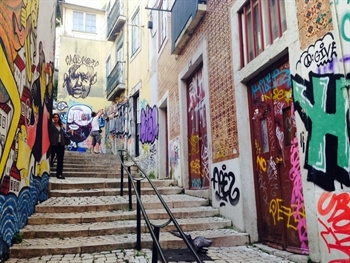
An alley in Mouraria
Recently I was on a panel at the University of Illinois at Chicago's Urban Forum entitled "Can neighborhood change not displace neighbors?" As we discussed community-building strategies that retain, rather than displace, existing residents, I did not imagine that a little over a month later, I would be sitting in a makeshift office building in Lisbon, Portugal, discussing the very same topic. Visiting the city through the Marshall Memorial Fellowship, another fellow and I met with Joao Meneses, coordinator of the effort to transform the ancient neighborhood of Mouraria. The name itself, as well as the neighborhood's architecture, is influenced by its early Moorish domination, and the area is now one of the city's most multicultural. It has also struggled, suffering many years of disinvestment. In recent years, though, the City of Lisbon, together with the European Union, has invested more than $12 million in the area, and the mayor moved his office right onto the main street as a symbol of his commitment to its revitalization.
For Joao and his colleagues, though, the challenge was not simply how to revitalize the area; it was how to do so in a way that involved and retained its longtime residents. We learned of several initiatives to that end, such as performers who met with elderly residents, learned their life stories and then performed them, both in public and in their living rooms. Another effort became evident just by wandering up and down the neighborhood's hilly alleys: photos of actual longtime residents themselves, captured going about their daily lives—leaning out of windows, walking home with groceries, playing dominoes with friends—and placed on buildings where they actually live. Here is a sampling:
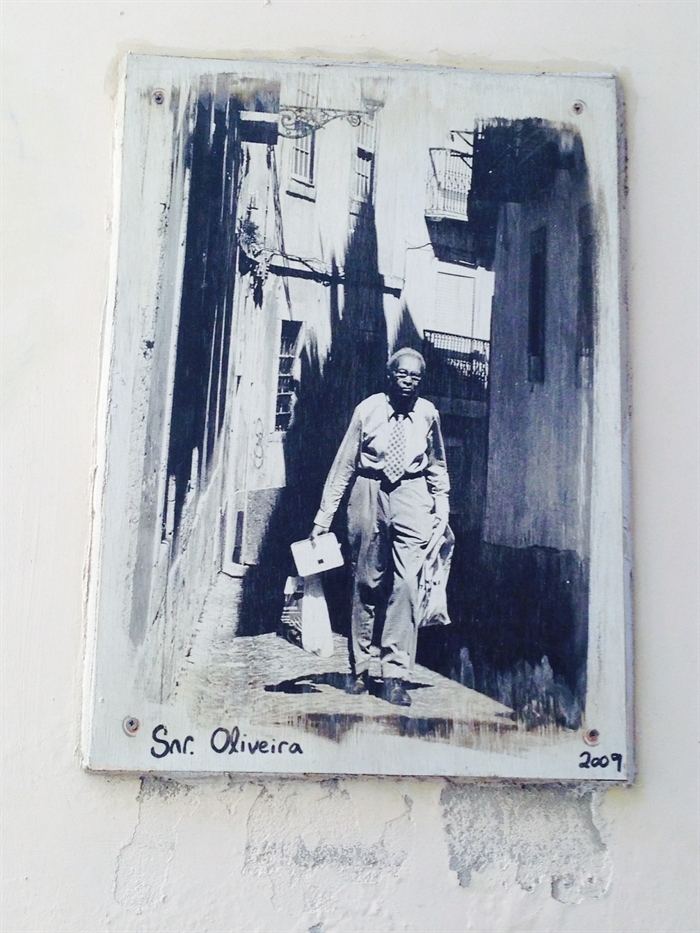
Snr. Oliveira
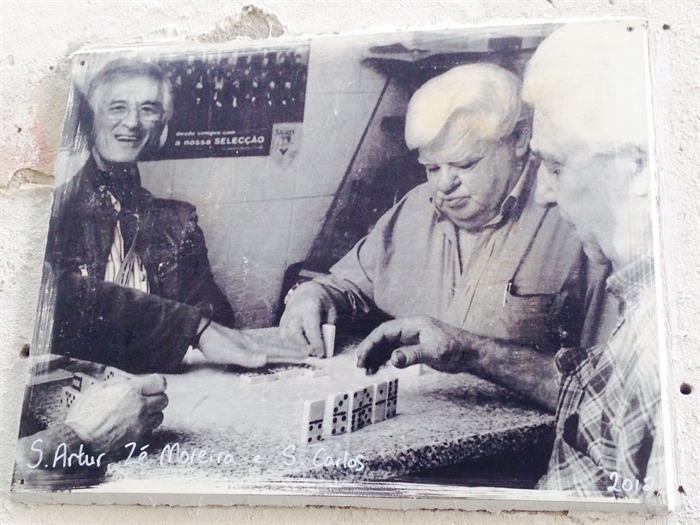
S. Artur, Zé Moreira, S. Carlos
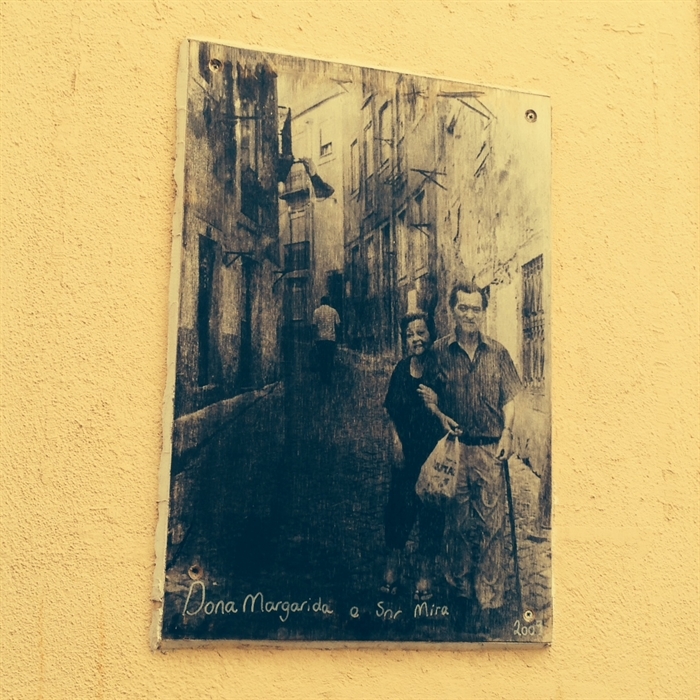
Dona Margarida, Snr. Mira

S. Henrique
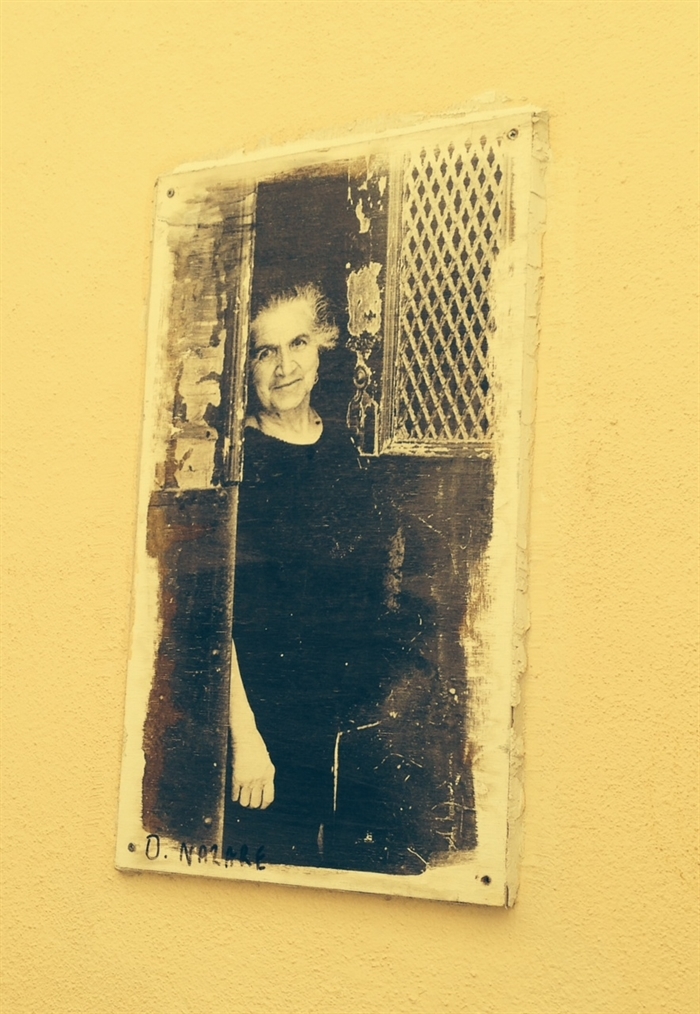
Dona Nazare

What must it mean, to see yourself on the buildings you pass every day as sidewalks are resurfaced, buildings redeveloped and the mayor moves in next door? Maybe it means a chance to feel noticed, be recognized as part of something important, and marked in time and space as a fixture in this neighborhood, no matter what changes may come. In the words of Simone Weil, "To be rooted is perhaps the most important and least recognized need of the human soul."
Many thanks to Joao Meneses for taking the time to open this extraordinary world to me.

Joao Meneses, Coordinator of the Mouraria Redevelopment Project